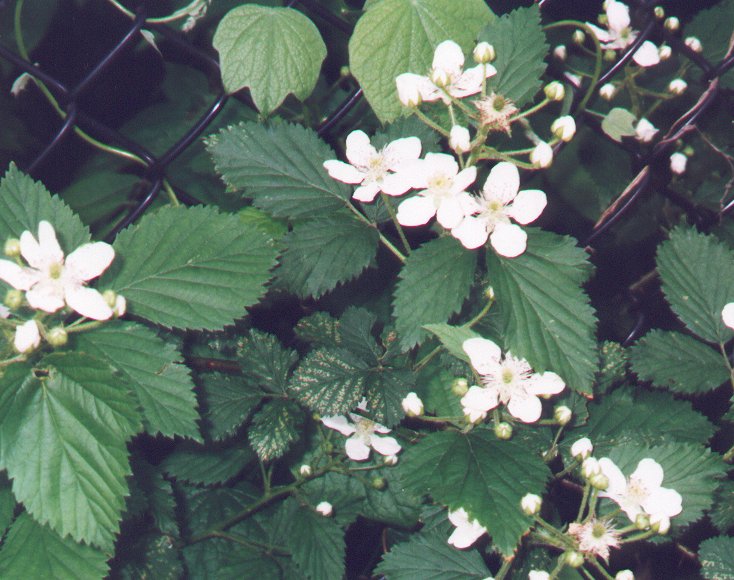Rubus allegheniensis Porter
Allegheny Blackberry

Native
CC = 4
CW = 3
MOC = 58
© DETenaglia
Rubus allegheniensis PorterAllegheny Blackberry | |
 |
Native CC = 4 CW = 3 MOC = 58 |
© DETenaglia |
|
Family - Rosaceae Stems - Erect or arching, to +2.5m long (tall). Primocanes deep green with a reddish-brownish tinge, with straight prickles to 1cm long, appressed pubescent or glabrous. Floricanes reddish-green with similar prickles to primocanes or with prickles more hooked, appressed pubescent or glabrous. All stems with vertical grooves creating an almost angled appearance.
Leaves - Alternate, typically trifoliolate on floricanes, with 5 leaflets on primocanes. Leaflets serrate, ovate to oval, tapering at both ends or cordate at base, upper surface pubescent, lower surface pubescent mostly on midrib and viens but also on leaf tissue. Middle leaflet larger than lateral leaflets. Petiole with hooked prickles. Stipules at base of petioles linear, +/- 1cm long.
Inflorescence - Racemose, to 15cm long (tall), cylindrical in outline, typically with 9-14 flowers. Racemes exerted beyond the leaves not hidden amongst them. Flowers - White, to +2.5cm broad with 5 distinct petals and many stamens. Pedicels hairy with some gland-tipped pubescence, with a small bract at the base. Fruit - An aggregate fruit, shiny dark purple to black color, to +2cm long. Flowering - April - June. Habitat - Shaded woods, rich soils, thickets. Origin - Native to U.S. Other info. - Species of this genus are sometimes very difficult to identify. The very similar R. orarius Blanch. has leaflets which are glabrous below and more ovate to roundish. The racemes of R. orarius are also more ovate in shape instead of cylindrical. Both species provide a delicious "blackberry" we love to eat. Photographs taken at the Kansas City Zoo, 5-15-99. |